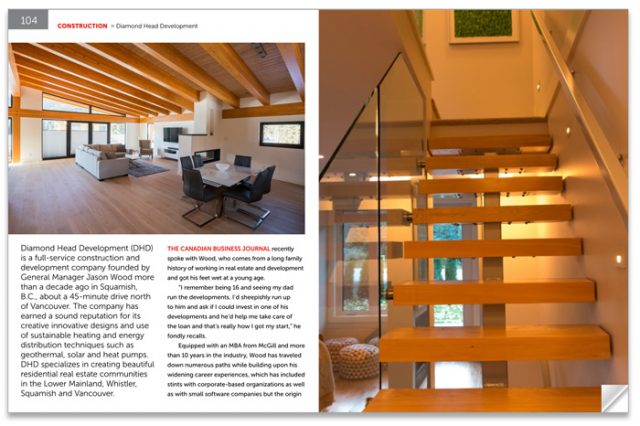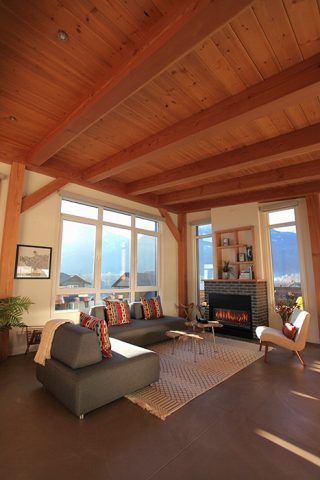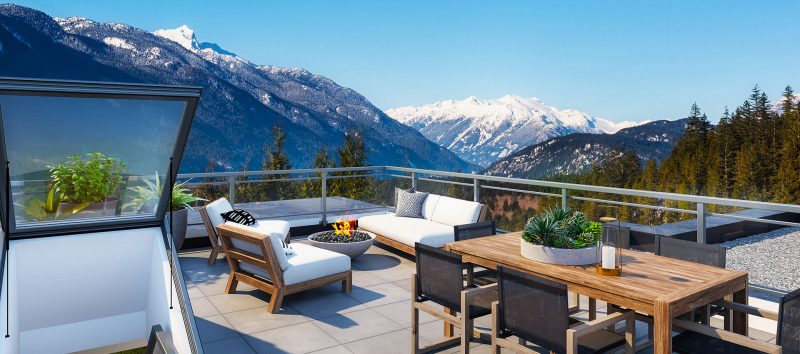The Squamish Montessori Elementary School is on a mission! Maxed out at their current site on Loggers Lane in Squamish, they’re looking to the future and building a new larger elementary school and daycare in the community of Skyridge. This elementary school and daycare, which should be operational in the year 2019, will be an important benefit for the Squamish and Skyridge community adding youth and energy and convenience. Diamond Head Development is building this school.
To facilitate this school and day care build, Squamish Montessori would like 100 people to donate $100 to help make it a reality.
Here’s their story:
“We started with passion, we’ll build a new school with your generosity.
Our story began with Lindsay and Michelle. Their adventurous spirit brought them to our small mountain town and their passion for education inspired them to build a Montessori school. Starting with three children in the lower level of the Squamish Community church in 2008, we’ve grown exponentially in the last decade to over 130 students. And we keep growing.
In 2015, an opportunity became available to build our dream school on the Skyridge site. We knew building a school would be hard, but the limitations of our space started to present challenges for our teachers to achieve the Montessori philosophy. We had to make it happen.
Through the amazing commitment of our community, we’ve secured funds for the project, but much more is needed to ensure we can turn bricks and mortar into a school.”
Money raised will help transform learning experiences for many children. The new school will ensure many Squamish children will have a space for creativity and independence. They’ll have a place where they can run outdoors and push their intellectual boundaries.
The Montessori school directors are asking for 100 people to donate $100 each to help them reach their goal of building this facility at our Skyridge development site.
Please DONATE NOW >>.
Steven Chua, Discover Squamish (originally published May 17, 2017)
When Sea to Sky Corridor resident Bob Deeks (pictured right) realized switching to a hybrid electric car could save money while supporting his company’s brand, he decided to give it a try.

Bob Deeks with his Chevy Volt electric-powered car at the Whistler charging station. – David Buzzard (Discover Squamish)
“First and foremost, it’s an environmental goal for us,” said Deeks, president of RDC Fine Homes. “Our company is branded around sustainable energy efficiency construction.”
Indeed, one of the company’s selling points is constructing housing – some of which is in Squamish – that incorporates circuitry that can be used to charge electric vehicles.
In addition to helping his company walk the talk, Deeks also figured buying an electric car was a better deal from an economic perspective, as it would help save on gas – he estimates he’s using less than four litres every 100 kilometres.
It’s just one example of how the electric car is slowly but surely creeping into Squamish, which appears to be embracing a greener way of moving around.
Deeks’ business is not the only one that’s embracing electric cars.
The company behind the Skyridge development in Squamish says customers will have the option to add circuitry to their homes that can accommodate electric car chargers.
“What we wanted to do was make sure the infrastructure was in place,” said Jason Wood, general manager of Diamond Head Development.
At the moment, car chargers are changing at such a rapid pace that it wouldn’t be ideal to install them in houses, as they would probably get outdated very quickly, he said.
So the best option would be to install circuitry that can accommodate chargers so homeowners can make changes as the technology evolves, Wood added.

Diamond Head Development general manager Jason Wood in the Skyridge Squamish new energy efficient show home. He is planning to install circuitry that can accommodate chargers. – David Buzzard (Discover Squamish)
He said the decision to install the circuitry was not made in response to customer demand, but rather out of concern for the planet.
“You come to a point in your career…[where] you want to go the extra mile. You want your product to be special and you want to look after the environment,” he said. “It just feels like it’s the right thing to do.”
But it’s not only businesses that are taking steps to welcome a more ecologically-friendly way of transportation. The District of Squamish is also getting on board as well.
The district is a member of the West Coast Green Highway, an initiative that has the goal of promoting clean fuel use from B.C. all the way to the southernmost tip of California.
The province has installed a fast-charging station downtown across from municipal hall. The station can get an electric vehicle to 80 per cent of its charge in about half an hour, and is available 24 hours a day.
There are also public charging stations available at West Coast Railway Heritage Park and Squamish Savings credit union.
The Executive Suites has a charger available for guests, and there are several private stations in town for members of car charging organizations such as PlugShare.
Learn more about the BuiltGreen® features of Skyridge Squamish, including 240V outlets in all duplex garages. 240V outlets are included as an upgrade in townhouse garages.
As seen in the SEPTEMBER 2017 Issue of The Canadian Business Journal.
Diamond Head Development (DHD) is a full-service construction and development company founded by General Manager Jason Wood more than a decade ago in Squamish, B.C., about a 45-minute drive north of Vancouver. The company has earned a sound reputation for its creative innovative designs and use of sustainable heating and energy distribution techniques such as geothermal, solar and heat pumps. DHD specializes in creating beautiful residential real estate communities in the Lower Mainland, Whistler, Squamish and Vancouver.
The Canadian Business Journal recently spoke with Wood, who comes from a long family history of working in real estate and development and got his feet wet at a young age.
“I remember being 16 and seeing my dad run the developments. I’d sheepishly run up to him and ask if I could invest in one of his developments and he’d help me take care of the loan and that’s really how I got my start,” he fondly recalls.
“Software and designing homes have very similar requirements in that you have to gather and organize trades or developers that you need to manage and guide with the goal of creating something for the end client.”– Jason Wood, Founder and GM, Diamond Head Development.
Equipped with an MBA from McGill and more than 10 years in the industry, Wood has traveled down numerous paths while building upon his widening career experiences, which has included stints with corporate-based organizations as well as with small software companies but the origin of all of his business endeavours has been rooted in the entrepreneurial aspect. In additional to the entrepreneurial aspect is Wood’s wealth of project management experience and product building. It’s a large puzzle that needs to be solved and there are many moving pieces to be organized, structured and scheduled. Wood says that if you want to run your own business you’ve got to put yourself out there and be the type of individual who is willing to make things happen. The only way to accomplish those dreams and turn them into reality is having the willingness to work long, hard hours and always maintain the utmost confidence in your abilities.
“Software and designing homes have very similar requirements in that you have to gather and organize trades or developers that you need to manage and guide with the goal of creating something for the end client,” explains Wood.
A number of companies within the industry specialize in either construction or development but DHD has the confidence to take on the responsibility of tackling both. However, Wood is always cautious and conservative in determining the types of projects that best suit the strengths of his practice.
“We take on projects that we know can succeed and we complete them and then move on to the next step. Being involved in both construction and development allows us to do that,” he says.
DHD is comprised of an administration and finance department and a project management division, and it is the individuals from that group that takes the lead on any given project. As managers they bring each project from the ground up until the keys are in the client’s hands. The operations team has site supervisors along with carpentry and labour teams including the safety personnel and site safety officers. Managing the firm’s relationships with the District of Squamish and all of its consultants is a responsibility Wood manages personally.
As of today, about 75% of DHD’s business originates in Squamish, of which between 80-90% would be residential, although in many instances the developments would best be classified as mixed-use. DHD has developed numerous high-end residential projects throughout the years. The most recent one added to the already impressive portfolio began in 2016 and is called Skyridge, a multi-use family community that will include a Montessori elementary school and daycare nestled amongst lustrous forest trails, a park and wonderful scenic views. DHD is the developer as well as the general contractor.

A prerequisite to constructing a community of that size is recognizing that a percentage of the overall infrastructure will be classified as commercial. DHD is building a sophisticated and complicated pump station, which would fall into that category, but Wood says the core residential communities always have been, and will continue to be, the bread and butter for his company.
DHD is able to specialize in projects that many competitors would find difficult, if not impossible, to accomplish. One such project that Wood is extremely proud of is an 11-unit townhouse building in Whistler, which was completed in June, 2015. It was a project that had been thrown around for about seven years until DHD came in and found the proper solution for the proprietor.
“When we got involved we were able to work with the ownership group and really developed the property. It was a decrepit fire hazard of a building that the whole community wanted torn down. They had no idea on how to redevelop it successfully when factoring in budget and design. We stepped in and hired a new architect. The building was redesigned and restructured from an engineering perspective and made it fit their budget,” says Wood.
The end result is that there are now 11 very happy homeowners in Whistler with a brand new condo less than five minutes from the ski hill.
The technology that is now available within the construction industry is quite remarkable but Wood says there is actually still quite a long way to go in that regard.

“I would say we’re about one-quarter of the way to where we need to be with the technology and building practices and where we need to get to in the next 20 years. Certainly the doors are open. It’s becoming part of our building code and bylaws. It’s finally gotten to a point where you can cost effectively implement environmentally friendly strategies into your building practices. They are now much more affordable, adding about 1-2% to the cost of the home,” he says.
Less than an hour prior to our conversation with Wood, he had just stepped away from an Energy Step Code working committee at the District of Squamish where the unified goal is to implement the strategies for the District of Squamish to introduce a the Energy Step Code program with the building community. The Energy Step Code is a set of incremental performance steps for new buildings that go from the B.C. Building Code to Net Zero Energy ready buildings. Wood says he and his contemporaries know that the government mandated program is coming so the committee has taken a proactive stance in getting a head-start on its unequivocal implementation.
“One of the benefits of using the Diamond Head Development is that you get economies of scale with our purchasing power compared to a builder who’s building a single-family home as a one off or does one or two of them per year.”– Jason Wood, Founder and GM, Diamond Head Development.
DHD has earned an outstanding reputation as being a top-tier full-service construction and development company and it’s something Wood and his team have worked tirelessly to achieve. The origin of business is designing residential custom homes, which allows the company to mix custom homes with building considerably larger density residential communities.
“One of the benefits of using the Diamond Head Development is that you get economies of scale with our purchasing power compared to a builder who’s building a single-family home as a one off or does one or two of them per year. We have excellent relationships and a great cost base for everything we do,” notes Wood.
DHD is a strong corporate citizen and is a member of such associations as the Canadian Homebuilders’ Association, Built Green, EnerGuide Built Home and the Squamish Chamber of Commerce. The company also supports a number of community events and charities throughout the year.
“We’re in a small community and because of that you get to know most of the people whether it’s volunteer work such as coaching soccer or hockey. We are a big supporter of the Hospital Foundation,” says Wood.
Over the course of the next several years Wood believes DHD will continue to evolve, although he’s quite comfortable with the size of the operations.
“Where I see our next focus is picking projects that gives back to the community. Skyridge is a great example. We were really the first multi-use development of this size where we had four different housing products. A lot of developments will have one housing product. We had single family lots, duplexes, townhouses, a condominium building and you could throw in a 250-child school on top of that,” he says.
It was a conscious corporate decision that DHD selected to serve the many different demographics within the community it serves and future projects in the pipeline are going to follow that same model and approach.
“I just met the general manager of the District of Squamish now that Skyridge has been approved and is under construction and asked if we were on the right track. He said that future projects will be modeled after Skyridge with different housing types,” remarks Wood. I think 20 to 30 years from now the first thing that will be noticed is a beautiful school for kids from daycare age all the way up to Grade Six. We always want to be a part of projects that give back to the community.”
DHD is already building most of its homes to A Step Code 2 or 10% more energy efficient than a minimum code. By 2032, all homes built in BC will need to be Net Zero or produce as much energy as they consume. Any DHD home that is built towards that goal, accomplishes the following:
- Saves money
- Better efficiency means long-term savings on water, electricity, and gas bills
- More durable
- New home built today will last for at least the next 100 years
- Better investment
- Homeowners will benefit from an increase in market resale value
- More comfortable
- Less drafts, cold spots, and temperature variances from room to room.
To find out more about Diamond Head Development, see their website >>
Squamish leads the way in eco-friendly design for greener homes
Squamish builders are getting ready for 2032 – the deadline to construct houses that use 70 per cent less energy than is set out in today’s building code.
By 2032, the provincial government’s goal is for all new homes and buildings to be net-zero ready.
These high-performance homes will be so energy efficient that a renewable energy system, such as on-site solar panels, can offset all or most of the annual energy consumption.
Energy efficiency is the new basic building standard, and B.C. is leading the way.
Any current buildings failing to meet this standard may have to take a hit in their resale value, explained Bob Deeks, president of Sea-to-Sky-based RDC Fine Homes.
“One reason to build beyond the building code would be to future-proof your house,” he said.
Patrick Sullivan, technical draftsman and lead carpenter at Squamish-based British Columbia Timberframe Company and Factor Building Panels, agreed.
“In 15 to 20 years, when everything is that way, your house may not be worth much.”
To help B.C. get there, the provincial government is introducing the Energy Step Code at the end of this year.
“It will lay out five different steps of building efficiency,” said Jonas Velaniskis, director of building and planning at the District of Squamish.

Spectacular views are seen from under the comfort of local Douglas fir timbers that form the main living room of Kevin Mooney, owner of BC Timberframe. – Allen Jones / ACE Film
Step one is the standard building code, he explained, while step five is a building that produces as much energy as it consumes.
Municipalities choose to set the bar for builders and developers somewhere between one and five.
“We tentatively said we’d like to get to three fairly quickly,” said Mayor Patricia Heintzman, adding that it may be possible to offer incentives to step five. “I feel that’s really where we should all be aspiring to. From a sustainability point of view, it hits all those markers.”
Though 2032 seems far away, many Squamish companies are prepared.
Net-zero ready
Based in Whistler, award-winning RDC Fine Homes has been building and renovating energy-efficient homes throughout the Sea to Sky Corridor, including Squamish.
“An energy efficient home – built right – will have better thermal comfort, better indoor air quality, be quieter and less dusty and be more durable. Additionally, it should have better value long term,” said Deeks, whose custom homes include those that are net-zero ready.
Such homes provide a more comfortable, much healthier environment for your family, he explained.
To achieve maximum energy efficiency, Deeks said, RDC’s homes rely on advancements in technology and modern building techniques, including ventilation, insulation, south-facing windows and solar panels positioned to capture maximum sunlight.
The first and lowest cost strategy to energy efficiency, explained Deeks, is an air-tight home, which can reduce energy loss in both the summer and winter.
Ensuring highly-effective insulation values is the next step, followed by a very efficient heating and/or cooling system with a heat recovery ventilator, which replaces stale air from inside the house with fresh air from outside with very little temperature change.
With these in place, monthly costs are dramatically reduced for homeowners. Any power they do need can be generated from on-site solar panels, with excess going back into the grid, for which a credit is given for up to 12 months, explained Deeks.
RDC recently started construction on Squamish’s first home with the new Canadian Home Builders’ Association’s Net Zero Energy Label. Others in Squamish include the award-nominated home in Crumpit Woods which, though not net-zero, is highly rated for energy efficiency.
Passive house
Patrick Sullivan is one of only approximately 500 licensed Passive House designers in Canada.
Together, he and Kelvin Mooney, owner of Squamish-based BC Timberframe, have built energy-efficient Passive Houses from Washington and Colorado up to northern B.C.
A Passive House is one that conforms to a rigorous energy efficient standards and ultimately creates an exceptionally low-energy building.
Such homes are currently more popular in Europe than in B.C., but this may change with the City of Vancouver mandating that new municipal buildings be built to the Passive House standard.
Unlike net-zero homes, Passive Houses do not require the generation of their own energy, and instead focus on achieving the absolute minimum amount of energy required for heating or cooling (up to 90 per cent less than a standard house of similar size).
“Ninety per cent efficiency is that sweet spot. Because you don’t need a heating or cooling system your construction costs actually drop since you’re putting less into the mechanical systems,” said Sullivan. This greatly reduces heating bills, making it cheaper to operate and live in, he explained.
Passive Houses have an extremely tight, highly-insulated building envelope with minimal heat loss or gain. It’s a design so efficient, the internal temperature of the building remains almost constant even on the hottest or coldest days.
To minimize heat loss even further, Sullivan’s panels contain an interior service wall – an additional layer, separate from the insulation, through which picture hooks, nails, plumbing or electrics can be fed without puncturing the insulation and creating an avenue for heat loss.
“This saves you creating a whole bunch of penetrations which reduce your energy efficiency,” he said.
Passive Houses are also incredibly healthy homes, he explained.
“What makes a home healthy is air quality. That’s the biggest defining factor,” Sullivan said. “With a proper HRV system you actually have air that’s more clean and pure on the inside.”
Material selection, too, is incredibly important.
“If you use proper materials that aren’t off-gassing, then you’re helping create an even healthier home and a more comfortable, natural environment,” Sullivan said.
Built green

The open-concept living area in a future Skyridge home. – Submitted rendering
Though the uptake of Passive Houses and net-zero houses is primarily being driven by homeowners, one developer taking the environmental lead is Squamish-based Diamond Head Development.
Skyridge will be Squamish’s first Built Green development and will include townhomes, duplexes and condos.
“As members of the construction industry we have an obligation to the community and the environment to do as much as possible. This is our way that we can contribute,” said Jason Wood, Diamond Head Development’s founder and general manager.
“Built Green’s certification takes a holistic approach to sustainability to address energy efficiency, materials and methods, indoor air quality, ventilation, waste management, water conservation and business practices,” explained a Built Green spokesperson, adding this all helps reduce utility bills and creates a healthier, more comfortable home environment.
And, of course, it also helps the resale value.
Homes with the Built Green certification are measured against many energy efficient criteria including windows, doors, insulation, appliances and energy systems.
Skyridge’s features will include Energy Star windows and sliding doors, LED designer lighting and solar-ready design.
The duplexes and townhouses will come as the gold standard Built Green model, explained Wood, though homeowners will be able to upgrade to the platinum model if they wish.
The demand for energy efficient housing is growing, said Wood, which will drive it to be a standard in the future.
“People are happy and feel comfortable and proud that they are buying into this and helping in a small way with a global issue.”
© Copyright 2017 Discover Squamish. See the original Discover Squamish now
 View the stunning variety of houses for sale now at Skyridge Skysuites. See home design and floorplans for:
View the stunning variety of houses for sale now at Skyridge Skysuites. See home design and floorplans for:







 View the stunning variety of houses for sale now at
View the stunning variety of houses for sale now at